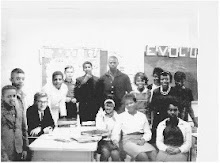Strategic Parroting Yielding Manifest Curiosity
In a study of kindergartners’ ‘manifest curiosity,’ or inquiry modes expressed in questioning behavior, we came across one student who seemed to be totally devoid of all curiosity (Manzo & Legenza, 1975). The child was very attractive and attentive, yet seemed to be intent on standing idly by in neutral. In desperation, the second investigators said to the child, “Here is a question that you could ask, repeat it after me. ... Now ask me that question.” Legenza then proceeded to answer the question fully and thoughtfully as if the child had thought of it herself. After just a few such parroted questions, the child began to initiate her own twists on the strategic questions Legenza had modeled, and thereafter to ask many of her own. The child had been transformed, at least in this situation, from an inert learner to one engaged in what we were calling ‘epistemological inquiry’ - or, expressive knowledge seeking.
Annemaria Palincsar, Ann Brown, and Suzanne Martin (1987) report equally remarkable success in Reciprocal Teaching episodes. They couldn’t seem to impart the idea of a student leading a discussion until they had one student “mimic” the teacher’s discussion-leading statements. Thereafter, the discussion began to flow rather naturally.
These reports also seem to lend further credibility to Facilitative Pretending. There is a larger strategy for promoting classroom participation in this same way called Note Cue (Manzo & Manzo, 1990). In Note Cue students are given cards that essentially tell them precisely what to ask, answer and comment on in a discussion following reading. The Note Cue Cards then are faded to prompts on what they might say, and then eliminated entirely for increasing numbers of children, until students essentially are tutored in the complex art of learning through discussion.
In: Instructional Ingredients: Educational Chefs Share Tricks of the Trade
Anthony Manzo & Ula Manzo
California State University-Fullerton
Avmanzo@aol.com & Umanzo@fullerton.edu
In:
Thinking Classrooms (Russian Language)Journal of the International Reading Association ,5,3(July, 2004) pp34-40
And: • Reading/Learning Assessment for Diagnostic-Prescriptive Teaching, 2nd edition (w. U. Manzo and Julie Albee) Belmont: California, Thomson/Wadsworth Publishers (2004).
Subscribe to:
Post Comments (Atom)

No comments:
Post a Comment